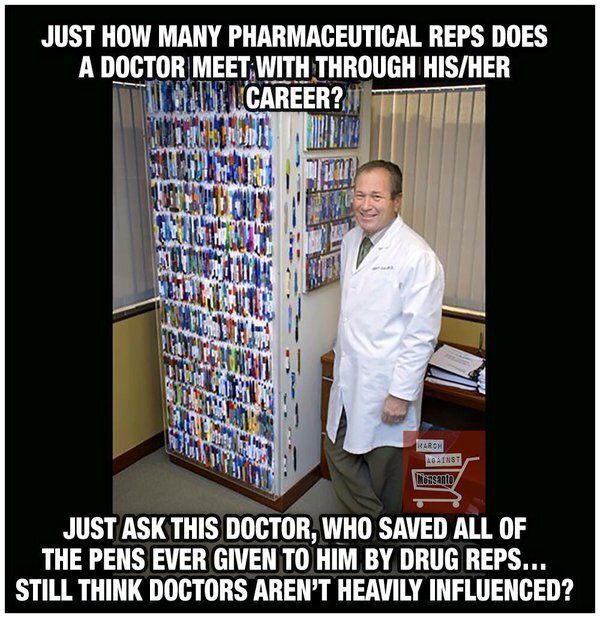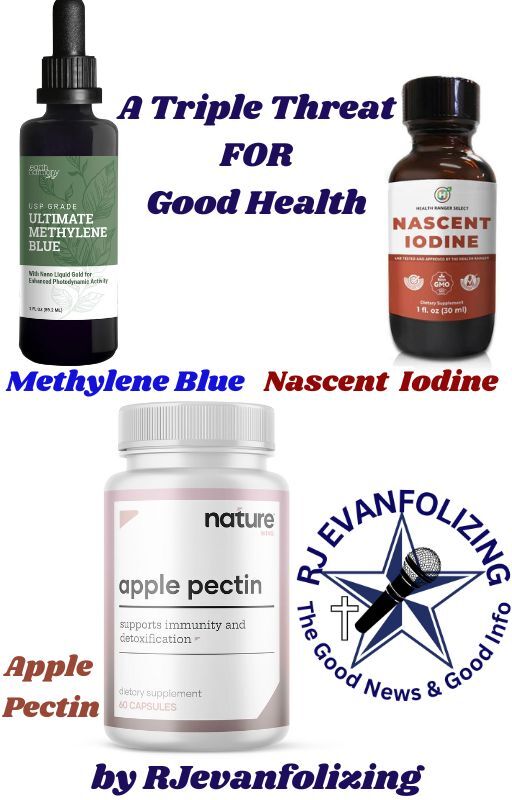
Physicians Should Refuse Pharmaceutical Industry Gifts
picture_as_pdf
PDF
print
Print
comment
Comments
STEVEN R. BROWN, MD, FAAFP, University of Arizona College of Medicine–Phoenix, Phoenix, Arizona
info
Am Fam Physician. 2021;104(4):348-350
assignment
Author disclosure: No relevant financial affiliations.
In 2016, the pharmaceutical industry spent $29.9 billion on medical marketing in the United States, including $20.3 billion for marketing directly to health care professionals. Of this spending, $5.6 billion was for prescriber detailing (mainly face-to-face visits), $13.5 billion for drug samples, and $979 million for direct physician payments.1
The United States has, by far, the highest prescription drug prices in the world.2 Market exclusivity is an important factor in high U.S. drug prices; on average, top-selling pharmaceuticals in the United States have a patent exclusivity of 14.5 years.2,3 Additionally, government-funded health plans are forbidden from negotiating lower prices for patients.2 These system processes maintain high drug prices that directly harm patients, especially those in marginalized communities.4–6
Knowing that the high price of drugs is a major detriment to public health in the United States and that the pharmaceutical industry spends vast sums marketing to health care professionals, physicians should refuse visits, gifts, payments, and drug samples from pharmaceutical representatives.
Physicians Should Not Visit with Pharmaceutical Representatives
Pharmaceutical representatives are trained to influence physicians, and they are effective.7,8 Visits from industry representatives often come with gifts and food, leading to low-value prescribing that is not evidence based.7,9 Pharmaceutical representatives seek to change the prescribing habits of a physician.8 Physicians claim that their behavior is not changed by industry interactions but admit to believing that other physicians can be influenced.10 Physicians who think they can accept gifts and spend time with industry representatives and not be influenced are in a position of cognitive dissonance.10 Time spent with these representatives is wasteful because ethical physicians are required to read about new drugs extensively to counteract false information provided by the representatives.11 In the words of family physician and ethicist Howard Brody, “Physicians ought to refuse to visit with representatives as a matter of both professional integrity and sensible time management.”12
Physicians Should Not Accept Gifts, Food, or Direct Payments from Industry
Gifts, even small ones such as pens and notepads, influence behavior.13,14 Direct payments from a pharmaceutical company increase the likelihood that physicians will prescribe that company's medications.13–15 This arrangement violates our ethical obligation to put the patient first. Unsurprisingly, patients report that they are not comfortable with this arrangement.16 Considering that many patients experience hardship because their medications are too expensive, perhaps industry could redistribute the $20.3 billion they spend on physician marketing toward lowering drug costs.
Physicians Should Refuse “Free” Samples for Their Patients
It is tempting to think sample medications help underserved patients, but samples do more harm than good. Medications in sample closets are not novel or useful and are often expired or inappropriately used by physicians and staff members.17–19 Sample medications in family medicine offices are brand-name medications delivered by industry to increase sales of the drug. A sample closet is actually a marketing closet.20 Samples are rarely first-line medications, recommended by guidelines, or superior to less expensive generic alternatives.17,21 Use of sample-closet medications leads to nonrational prescribing.22 Sample-closet medications are more likely to be used by patients who have health insurance and not by patients most in need.23 A patient started on an expensive brand-name drug is likely to continue that drug.8 Use of sample-closet medications increases the cost of medications for patients, both out-of-pocket and total cost.24 The $13.5 billion the pharmaceutical industry spends annually on sample medications is not designed to help patients; it is designed to increase sales of brand-name drugs.
The Good News: Physician Interaction with Industry Is Decreasing
Numerous national organizations and experts have called for limiting physician-industry interaction.25 The Physician Payments Sunshine Act, part of the 2010 Affordable Care Act, required the industry to report all gifts to physicians starting in 2014.26 There is evidence that this reporting, with strict legislative action, has decreased interactions between physicians and industry.27,28 All interaction (e.g., detailing, samples, gifts, direct payments) between physicians and industry has decreased slightly over the past decade, from 84% in 2009 to 72% in 2017, according to surveys of physicians.29,30 In 2017, 55% of physician offices reported accepting samples vs. 64% in 2009.29,30
Family medicine residency programs have even more substantially decreased their interactions with industry. In 2019, 64% of programs did not allow the use of samples, the acceptance of food or gifts, industry-sponsored residency activities, or other industry interactions, compared with 26% in 2008.31 As of 2019, 86% of family medicine residencies do not accept samples, and 84% do not allow visits with industry representatives, a substantial increase from 52% and 43%, respectively, in 2008.31 Program directors cite institutional policy and ethical concerns as the main factors driving a decrease in industry interaction.31 Restricting contacts with industry during physician training is especially important to promote evidence-based prescribing because practice habits form during this important time in a physician's career.
Conclusion
The high cost of prescription drugs in the United States is a major public health challenge. This high cost is driven by prescribing of expensive brand-name medications, which is influenced heavily by the pharmaceutical industry spending billions of dollars to market directly to physicians. Physicians should refuse gifts, samples, direct payments, and other industry interaction to avoid perpetuating an unjust health system.
It is the professional responsibility of a physician to promote social justice, commit to a just distribution of finite resources, prioritize patient welfare, and not compromise integrity with conflicts of interest.32
Editor's Note: American Family Physician has a strict policy when it comes to authorship and conflict of interest (https://www.aafp.org/afp/coipolicy). In addition to reviewing disclosure forms submitted by authors, we routinely search public databases of physician-industry interactions to make sure there are no conflicts that were inadvertently omitted. During this search, we frequently uncover numerous reports of lunches and dinners provided by pharmaceutical companies. We carefully review each one to see whether the reports are relevant to the topic of the article and to determine the degree of financial relationship (i.e., a lunch or two vs. hundreds of dollars for meals). Rarely has an author been disqualified based on these meals alone; however, disclosures have sometimes been published with the articles, and the option of disqualification is possible for significant meal payments to avoid the perception of bias.—Sumi Sexton, MD, Editor-in-Chief
Dr. Brown is a contributing editor for AFP.
expand_moreAuthor Information
Address correspondence to Steven R. Brown, MD, FAAFP, at [email protected]. Reprints are not available from the author.
Author disclosure: No relevant financial affiliations.
expand_moreReference(s)
Schwartz LM, Woloshin S. Medical marketing in the United States, 1997–2016. JAMA. 2019;321(1):80-96.
Kesselheim AS, Avorn J, Sarpatwari A. The high cost of prescription drugs in the United States: origins and prospects for reform. JAMA. 2016;316(8):858-871.Kesselheim AS. Determinants of market exclusivity for prescription drugs in the United States. September 13, 2017. Accessed April 15, 2021. https://www.commonwealthfund.org/publications/journal-article/2017/sep/determinants-market-exclusivity-prescription-drugs-unitedRosenthal E. When high prices mean needless death. JAMA Intern Med. 2019;179(1):114-115.Laba T-L, Jan S, Zwar NA, et al. Cost-related underuse of medicines for asthma-opportunities for improving adherence. J Allergy Clin Immunol Pract. 2019;7(7):2298-2306.e12.Berkowitz SA, Seligman HK, Choudhry NK. Treat or eat: food insecurity, cost-related medication underuse, and unmet needs. Am J Med. 2014;127(4):303-310.e3.Fickweiler F, Fickweiler W, Urbach E. Interactions between physicians and the pharmaceutical industry generally and sales representatives specifically and their association with physicians' attitudes and prescribing habits: a systematic review. BMJ Open. 2017;7(9):e016408.Fugh-Berman A, Ahari S. Following the script: how drug reps make friends and influence doctors. PLoS Med. 2007;4(4):e150.Brown SR. The why and how of high-value prescribing. Am Fam Physician. 2016;93(4):262-263. Accessed May 13, 2021. https://www.aafp.org/afp/2016/0215/p262.htmlChimonas S, Brennan TA, Rothman DJ. Physicians and drug representatives: exploring the dynamics of the relationship. J Gen Intern Med. 2007;22(2):184-190.Habibi R, Lexchin J, Mintzes B, et al. Unwarranted claims of drug efficacy in pharmaceutical sales visits: are drugs approved on the basis of surrogate outcomes promoted appropriately? Br J Clin Pharmacol. 2017;83(11):2549-2556.Brody H. The company we keep: why physicians should refuse to see pharmaceutical representatives. Ann Fam Med. 2005;3(1):82-85. Accessed May 13, 2021. https://www.annfammed.org/content/3/1/82.longWazana A. Physicians and the pharmaceutical industry: is a gift ever just a gift? JAMA. 2000;283(3):373-380.Dana J, Loewenstein G. A social science perspective on gifts to physicians from industry. JAMA. 2003;290(2):252-255.Fresques H. Dollars for doctors: doctors prescribe more of a drug if they receive money from a pharma company tied to it. December 20, 2019. Accessed April 15, 2021. https://www.propublica.org/article/doctors-prescribe-more-of-a-drug-if-they-receive-money-from-a-pharma-company-tied-to-itKanter GP, Carpenter D, Lehmann LS, et al. US nationwide disclosure of industry payments and public trust in physicians. JAMA Netw Open. 2019;2(4):e191947.Evans KL, Brown SR, Smetana GW. Sample closet medications are neither novel nor useful. J Am Board Fam Med. 2013;26(4):380-387.Evans KL, Brown SR. Many sample closet medications are expired. J Am Board Fam Med. 2012;25(3):394-395.Westfall JM, McCabe J, Nicholas RA. Personal use of drug samples by physicians and office staff. JAMA. 1997;278(2):141-143.Brown SR. Closing the sample closet. Fam Pract Manag. 2006;13(10):16; reply 21. Accessed May 13, 2021. https://www.aafp.org/fpm/2006/1100/p16.htmlChoudhry NK, Denberg TD, Qaseem A. Improving adherence to therapy and clinical outcomes while containing costs: opportunities from the greater use of generic medications: best practice advice from the Clinical Guidelines Committee of the American College of Physicians. Ann Intern Med. 2016;164(1):41-49.Symm B, Averitt M, Forjuoh SN, et al. Effects of using free sample medications on the prescribing practices of family physicians. J Am Board Fam Med. 2006;19(5):443-449.Cutrona SL, Woolhandler S, Lasser KE, et al. Characteristics of recipients of free prescription drug samples: a nationally representative analysis. Am J Public Health. 2008;98(2):284-289.Alexander GC, Zhang J, Basu A. Characteristics of patients receiving pharmaceutical samples and association between sample receipt and out-of-pocket prescription costs. Med Care. 2008;46(4):394-402.Brennan TA, Rothman DJ, Blank L, et al. Health industry practices that create conflicts of interest: a policy proposal for academic medical centers. JAMA. 2006;295(4):429-433.Agrawal S, Brennan N, Budetti P. The Sunshine Act—effects on physicians. N Engl J Med. 2013;368(22):2054-2057.Brunt CS. Physician characteristics, industry transfers, and pharmaceutical prescribing: empirical evidence from Medicare and the Physician Payment Sunshine Act. Health Serv Res. 2019;54(3):636-649.King M, Bearman PS. Gifts and influence: conflict of interest policies and prescribing of psychotropic medications in the United States. Soc Sci Med. 2017;172:153-162.Campbell EG, Rao SR, DesRoches CM, et al. Physician professionalism and changes in physician-industry relationships from 2004 to 2009 [published correction appears in Arch Intern Med. 2010;170(22):1966]. Arch Intern Med. 2010;170(20):1820-1826.Kesselheim AS, Woloshin S, Lu Z, et al. Internal medicine physicians' financial relationships with industry: an updated national estimate. J Gen Intern Med. 2019;34(2):195-197.Brown SR, Fugh-Berman A. Changing pharmaceutical industry interaction in US family medicine residencies: a CERA study. J Am Board Fam Med. 2021;34(1):105-112.American Board of Internal Medicine. The physician charter. 2002. Accessed April 15, 2021. https://abimfoundation.org/what-we-do/physician-charter

Welcome to our community, where we share good information to save our nation. I will also be posting videos and podcasts on Bible Prophecy and the strong likelihood that the Anti-Christ will be Muslim starting in July. We are all here to spread the truth the mainstream media keeps from us by omission or lies and propaganda. Share posts and story ideas and let's wake up a sleeping giant that scares the globalists. America coming awake scares them more than anything else in the world.
There are ten steps to tyranny that all tyrants put a nation through when they capture a country from within. The last step being martial law and we are one election controversy and constitutional crisis away from losing our nation and the freedoms we have enjoyed for two centuries' plus.
We need Paul Reveres to shout from the roof tops "The Tyrants Are Coming" and warn Americans of the impending dangers to our Constitutional Republic. Ben Franklin warned us that we have been given a Republic "If we can keep...
Nicotine "The Patch That Scares Big Pharma" The Story They Don't Want Told. New eBook on Everything Nicotine Heals, Reverses and Cures. This episode I am going to lay out what is happening with Big Pharma, Big Insurance, and Big Food in my eBook and how they all monetize chronic disease. I will also cover the diseases Nicotine can heal and why they do not want this information getting out.
There is venom in quite a few of the prescription drugs that Big Pharma is handing out like candy and it's important you know. I'll also get into a little more on nicotine, that life changing and lifesaving nutrient THEY don't want you to know about.
The way we are being lied to about what is good for us and what harms us is beyond the pale. Salt that harmful spice, the King of flavor enhancers that is bad for your blood pressure and increases your risk for heart attack and stroke, has been demonized for decades. A large study and I mean large has exposed this to be another big lie to keep you sick so the medical industrial complex can manage and monetize your chronic disease. A study was done out of Tel Aviv, Israel in 2016 that looked at 500,000 people in 49 countries. They found that the individuals who ate the most salt every day, 6.000 to 9.000 milligrams had the lowest risk factors for stroke, heart attack, and high blood pressure. I don't know about you but that is the exact opposite that I have heard and been told by doctors for decades since my mother's first heart attack in 1994.
I remember buying Dash salt substitute for my mom and trying it on something she cooked when I was visiting, and I was not impressed. I have no idea ...
In a world of ever-evolving health trends and supplements, three potent substances have emerged as remarkable tools for enhancing physical and mental well-being: methylene blue, apple pectin, and nascent iodine. Though they originate from vastly different sources and traditions, each compound offers unique and synergistic benefits that support detoxification, cellular health, cognitive function, and more. This article explores the science and potential applications of these three substances in everyday health and longevity strategies.
Methylene Blue - The Mitochondrial Enhancer
What is Methylene Blue? Methylene blue is a synthetic compound with a long history in medicine, originally used as a dye and later as a treatment for malaria. In recent years, it has gained attention for its profound benefits in cellular and brain health.
Mechanism of Action; Methylene blue acts as an electron cycler within the mitochondria, improving cellular respiration and energy production. It can cross the blood-brain barrier, making it particularly effective for ...

The Covid 19 MRNA vaccine was never actually MRNA according to the NIH website. The NIH admits that DNA Plasmids are in the vaccine. What are DNA Plasmids you ask? There is a story behind that question, and it is going to sound evil because it is evil. The powers that be actually went ahead with a real depopulation agenda to cull the World Herd of Humanity of its useless eaters. The DNA Plasmids or snake venoms were put into the shots not to heal you from the Covid 19 virus but to harm, injure and kill you. Here is the cherry on top. The makers of the vaccines did not even put a piece of the Covid 19 virus in the shot to help you develop antibodies against the virus. They never wanted your body to learn to fight off the virus and protect itself like a normal vaccine would do. The NIH guaranteed that the vaccine would never cause you to get the Covid 19 virus because it never had a piece of the virus to begin with.
The DNA Plasmid technology began in 1956 with Dr. Stanley Cohen being ...












